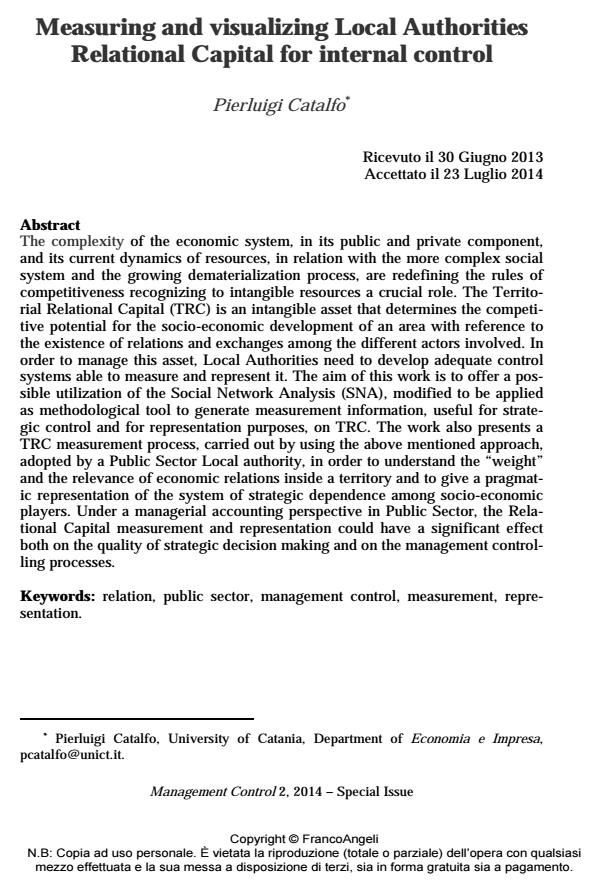Measuring and visualizing Local Authorities Relational Capital for internal control
Journal title MANAGEMENT CONTROL
Author/s Pierluigi Catalfo
Publishing Year 2014 Issue 2014/2
Language English Pages 21 P. 23-43 File size 202 KB
DOI 10.3280/MACO2014-002002
DOI is like a bar code for intellectual property: to have more infomation
click here
Below, you can see the article first page
If you want to buy this article in PDF format, you can do it, following the instructions to buy download credits

FrancoAngeli is member of Publishers International Linking Association, Inc (PILA), a not-for-profit association which run the CrossRef service enabling links to and from online scholarly content.
The complexity of the economic system, in its public and private component, and its current dynamics of resources, in relation with the more complex social system and the growing dematerialization process, are redefining the rules of competitiveness recognizing to intangible resources a crucial role. The Territorial Relational Capital (TRC) is an intangible asset that determines the competitive potential for the socio-economic development of an area with reference to the existence of relations and exchanges among the different actors involved. In order to manage this asset, Local Authorities need to develop adequate control systems able to measure and represent it. The aim of this work is to offer a possible utilization of the Social Network Analysis (SNA), modified to be applied as methodological tool to generate measurement information, useful for strategic control and for representation purposes, on TRC. The work also presents a TRC measurement process, carried out by using the above mentioned approach, adopted by a Public Sector Local authority, in order to understand the "weight" and the relevance of economic relations inside a territory and to give a pragmatic representation of the system of strategic dependence among socio-economic players. Under a managerial accounting perspective in Public Sector, the Relational Capital measurement and representation could have a significant effect both on the quality of strategic decision making and on the management controlling processes. .
Keywords: Relation, public sector, management control, measurement, representation
- Robust sustainable development assessment with composite indices aggregating interacting dimensions: The hierarchical-SMAA-Choquet integral approach Silvia Angilella, Pierluigi Catalfo, Salvatore Corrente, Alfio Giarlotta, Salvatore Greco, Marcella Rizzo, in Knowledge-Based Systems /2018 pp.136
DOI: 10.1016/j.knosys.2018.05.041
Pierluigi Catalfo, Measuring and visualizing Local Authorities Relational Capital for internal control in "MANAGEMENT CONTROL" 2/2014, pp 23-43, DOI: 10.3280/MACO2014-002002